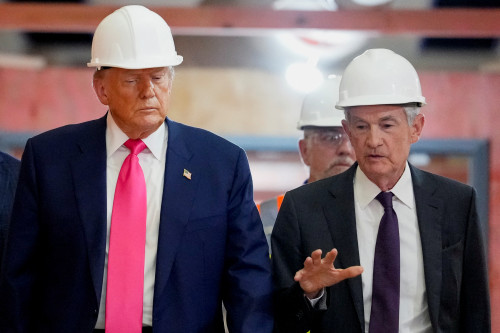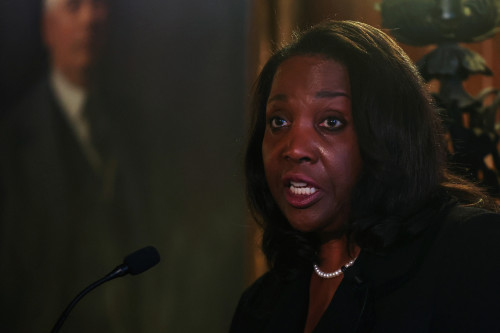By Michael S. Derby and Ann Saphir
(Reuters) -President Donald Trump’s attempt to fire Federal Reserve Governor Lisa Cook is unlikely to affect the U.S. central bank’s path toward cutting interest rates next month, but it creates new uncertainties about what happens after that meeting amid the unprecedented attack on the Fed’s independence.
Financial markets still broadly expect the Fed to cut its benchmark interest rate by a quarter of a percentage point to the 4.00%-4.25% range at its September 16-17 meeting, with futures markets on Tuesday placing an 86% probability on that outcome.
After the September meeting, markets are split on whether the Fed can deliver as much as 50 basis points in additional easing by the end of this year. Investors generally took the Cook developments in stride.
“Our base case remains for the Fed to resume cutting policy rates in September,” Citibank economists said in a research note, although they added they think markets are underestimating the odds that the ultimate path of easing is more aggressive than what’s currently priced in.
Trump late on Monday announced he would fire Cook, the first such move by a U.S. chief executive. The president and his allies have accused Cook, the only Black woman to become a Fed governor, of committing mortgage fraud in connection with properties she bought in 2021, before becoming a Fed official.
Cook said she is not leaving her job and has retained legal representation to fight Trump’s attempt to fire her.
There is considerable uncertainty whether the president can in fact remove the Fed governor, who by law can only be removed “for cause,” as Fed officials’ terms are designed to protect them from political interference, facilitating their ability to make potentially unpopular monetary policy choices.
The president has been pressuring the Fed for an extended period to cut interest rates aggressively to levels generally seen as consistent with a recession, which the economy is not currently facing. Trump has repeatedly threatened to fire Fed Chair Jerome Powell, although he recently has backed away from that saber-rattling.
With Trump on track to pick a replacement for Powell, whose term as Fed chief expires next May, removing Cook would give the president space to name a new governor who presumably would be more inclined to support his push for sweeping rate cuts. He has already named an ally to take over for former Fed Governor Adriana Kugler, who resigned unexpectedly earlier this month.
“The market probably isn’t going to discount much in the near term, but in the long run the politicization of the Fed should produce higher inflation and higher rates,” said Andy Laperriere, head of U.S. policy research at Piper Sandler. “Trump wants an easy money policy that will eventually produce higher inflation.”
STEADY BET
Markets had already placed strong odds on a rate cut next month following Powell’s speech on Friday to the Jackson Hole research conference in Wyoming. The Fed chief told world central bankers and economists gathered there that “with policy in restrictive territory, the baseline outlook and the shifting balance of risks may warrant adjusting our policy stance.”
Fed officials are increasingly worried that even as inflation remains a problem which could get worse due to Trump’s large-sized import tariffs, the threat to the labor market may have risen to a level where it warrants the central bank taking action. They are mindful of the fact that they may need to get ahead of weakening jobs data with easier short-term borrowing costs, even as doing so risks making it more difficult for the central bank to get inflation back to its 2% target.
However, a number of Fed officials who spoke last week said they were not ready to cut rates, which could point to a contentious policy meeting ahead. Meanwhile, the central bank is facing aggressive pressure from Trump and administration officials to cut rates aggressively.
Trump’s attempt to fire Cook is likely to weigh on Fed policy actions in the long term, given its implications for who serves as a central bank official.
“What I’m really thinking about here is obviously how aggressively the Fed may cut interest rates this year and into next year,” said Scott Anderson, chief U.S. economist at BMO Capital Markets. “I don’t think I’m going to change my baseline view based on what we know at this point, but certainly the risk kind of swings towards more cuts … you can’t rule out three cuts this year.”
(Reporting by Michael S. Derby and Ann Saphir; Editing by Paul Simao)


